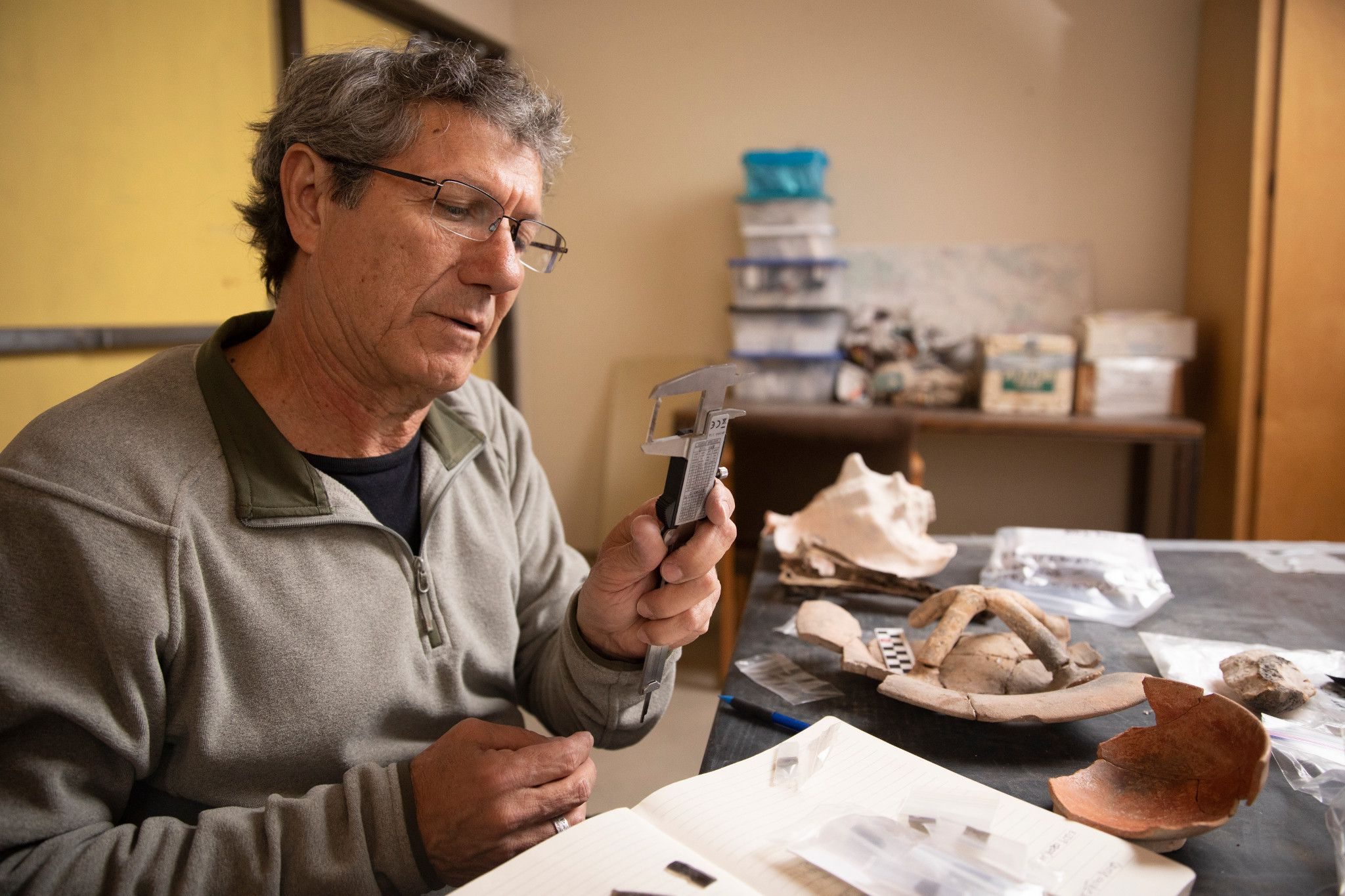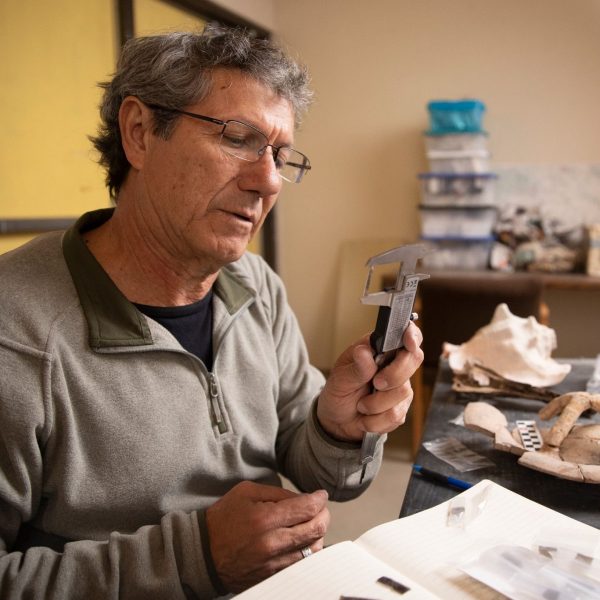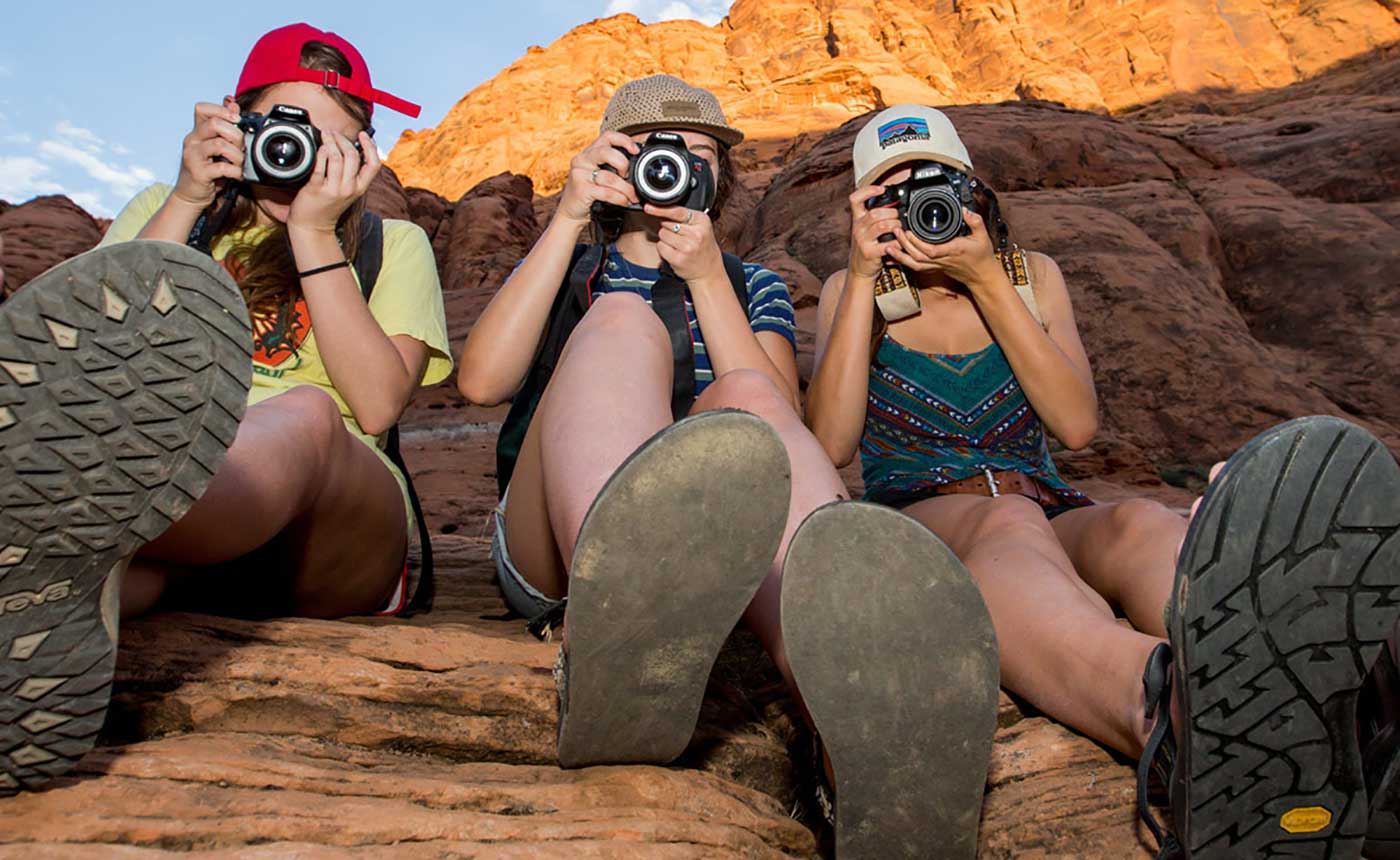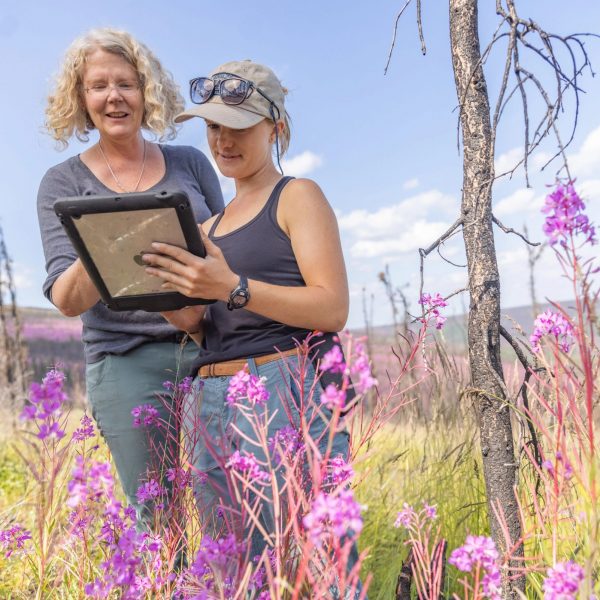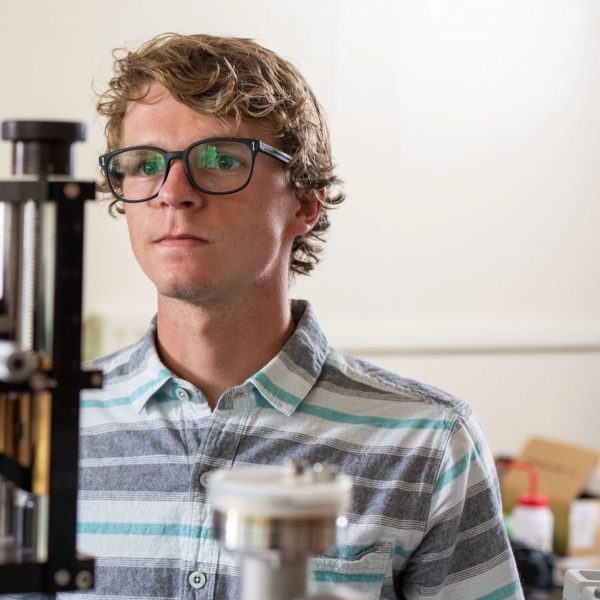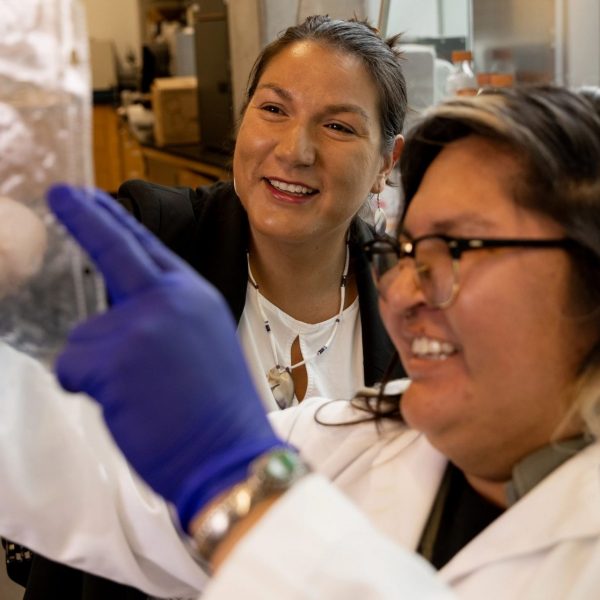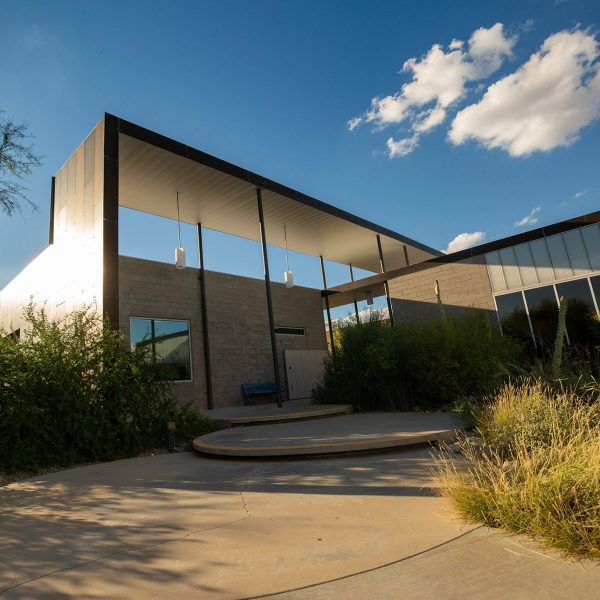It would be an understatement to say technology has revolutionized the face of archaeology since NAU Anthropology Professor Jaime Awe started his career in the 1980s.
“In the past, if you wanted to find archaeological sites in the jungle, you would have to get your machete and start hacking your way through the jungle,” says Awe, who conducts research in his home country of Belize. “With LiDAR[*] images, we can now put the info in the computer, tell the program, ‘get rid of all the jungle and just show me bare earth,’ and you see the archaeological sites just sticking out of the jungle. It’s like having a magic wand.”
That’s just one example of the technology Awe and his students now routinely apply to their work. Digital technology—LiDAR, 3D printed copies of artifacts, high-resolution photography, software imaging, isotope analysis, and more—has transformed the discipline. But the goal remains the same: to tell the stories of ancient civilizations, for their own sake and in the hope that they might impart valuable lessons for modern society.
Awe has been conducting research with his Belize Valley Archaeological Reconnaissance (BVAR) project in western Belize since 1988, excavating and exploring the physical history left behind by the Maya civilization. Every summer since he came to NAU in 2014, Awe has taken undergraduate and graduate students like Tia Watkins to work with BVAR in Belize.
Watkins transferred to NAU from community college in California specifically to work with Awe. She graduated in 2018 with a bachelor’s degree in Anthropology and an Archaeology emphasis. Today, Watkins is a PhD candidate at University College London and continues her research in Belize.
“Dr. Awe’s dedication to his students is unwavering,” Watkins says. “And I think my undergraduate achievements (and those of many others) are a testament to his determination to see his students succeed.”
Introducing students to fieldwork is a rewarding part of the job for Awe, in part because they learn valuable, career-building lessons beyond the nuts and bolts of excavation. “The students get trained in field methods in archaeology,” Awe explains, “while at the same time contributing to the conservation of ancient sites and the development of tourism in developing countries.”
Awe’s archaeological scholarship, in conjunction with that of his colleagues and the students they mentor, has caught the interest of global media and been featured in numerous articles and documentaries.
Signs of a culture in crisis
Putting together clues left by humans and nature, Awe’s recent work focuses on caves used by Maya for ritual purposes and zeroes in on possible causes of the civilization’s collapse.

“We know that the Maya were going into these caves to petition their rain god to make rain and to petition the earth gods that they would have successful crops,” he explains. “From very early on, the Maya are going into the caves, they’re doing their rituals regularly, but then sometime around 750 to 800 CE, we see this spike in cave ritual activity. People began praying more.”
Indeed, Awe has found many more artifacts and signs of ritual human sacrifice in the caves from this period. These relics beg the question, “What leads people to seek divine intervention?”
Awe answers: “You look for divine intervention when you’re in crisis, when things are bad. You pray more because you’re requesting your god or gods to intervene and make things better.”
But what caused the sudden uptick in ritual activity? “It goes back to knowing why they were going in the caves in the first place: to petition for rain and a successful agricultural cycle,” says Awe. From these findings, he hypothesized that the cause of the increased activity could be drought, and conducted research to further test that theory.
Soon a dramatic picture emerged, painted by evidence gathered from disparate sources—artifacts and stalagmite cross-sections from within the cave, along with soil core samples and other data from the surrounding area. An extreme drought event directly corresponded with activity levels in the caves and the eventual abandonment of settlements.
Ultimately, Awe says, the Maya’s supplications to their gods couldn’t overcome their failure to sustainably manage resources as environmental conditions changed. This insight, he hopes, can perhaps inform modern people’s responses to the rapidly changing ecological realities triggered by climate change.
Next summer, Awe and his students will return to Belize to continue to examine the past and tell the stories of a remarkable and sophisticated civilization. And maybe the stories they’ll tell can inform a brighter future for humanity today.
[*]↩ Light Detection and Ranging (LiDAR) uses laser technology to quickly map the contours of surfaces, including large areas of jungle. Airborne LiDAR allows archaeologists to spot physical anomalies hidden beneath vegetation. Ground-based LiDAR can create detailed maps of ancient structures and cities.
A career devoted to archaeology, conservation, and education
Jaime Awe is a Professor of Anthropology at Northern Arizona University, member emeritus of the Belize Institute of Archaeology, and senior director of the Belize Valley Archaeological Reconnaissance Project. He won the Society for American Archaeology 2022 Award for Excellence in Latin American and Caribbean Archaeology. In 2017 he received a Discovery Award from the Chinese Academy of Social Sciences and in 2019 he was named Belize Person of the Year. He received his BA and MA in Anthropology at Trent University in Ontario, Canada, and his PhD from the University of London, England.
Between 2003 and 2014, he served as the first director of the Belize Institute of Archaeology, where he was responsible for managing the archaeological heritage of his home country Belize. During his extensive professional career, Awe has directed conservation efforts at several significant archaeological sites in Belize. His research has focused on questions that span from the Paleo-Indian period to the time of European contact in the 16th century. More recently, his research has addressed questions related to the rise of cultural complexity in western Belize and human responses to environmental stress during the decline of Mayan civilization. His diverse research projects have been featured in documentaries by the National Geographic Society, NOVA, the Discovery Channel, and Curiosity Stream Europe.

